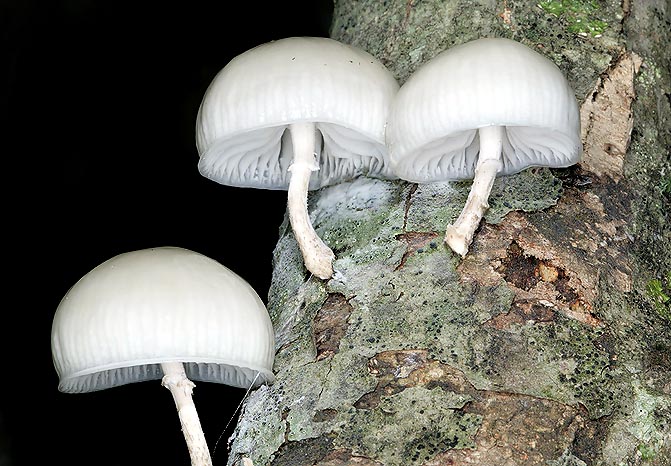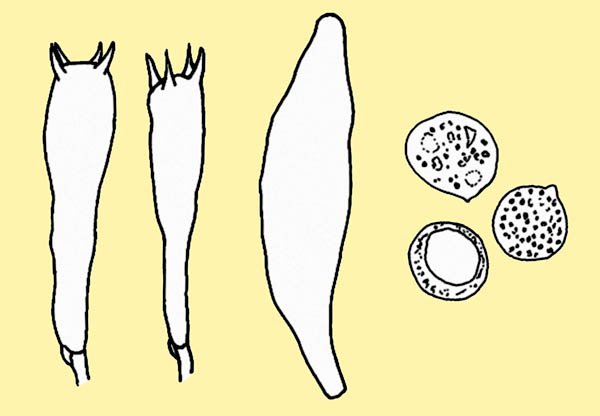
Text © Pierluigi Angeli

English translation by Mario Beltramini

The Oudemansiella mucida grows on beech branches with 2-6 cm caps © Giuseppe Mazza
Family: Marasmaceae Roze ex Kühner, 1980.
Genus: Oudemansiella Persoon.
The name of the Oudemansiella mucida (Schrader) comes from the Latin “mucidus” = mucilaginous, due to its look, completely covered by mucilage.
Description of the genus
The genus Oudemansiella is cha- racterized by species that are gluti- nous and viscous, with more or less slender stem with membranous ring.
The carpophores are mostly rigid with the stem which may be deeply driven into the ground, rooting, or woody with just widened base or with thick mycelial rhizomorphs.
Description of the species
Cap: 2-6 (8) cm, initially convex then flat, thin margin, almost grooved; slightly wrinkled cuticle, covered by slimy mucilage, of ashy white colour, olive grey at the centre, translucent.
Hymenium: spaced gills, broad, sinuate, rounded to the stem, adnate, intercalated by lamellulae, mucilaginous, white.
Stem: 3-7 x 0,2-0,8 cm, slender, hard, rigid, sinuous, full, enlarged at the base, streaked at the top, white, darkens when handled.

Oudemansiella mucida cystidia, basidia and spores © Pierluigi Angeli
Ring: at top, thin, rather broad, white.
Flesh: thin, little, soft with slightly herbaceous smell, mild flavour.
Habitat: it grows on beech trees with little vigour or on fallen branches, always of beech, caespitose or single.
Edibility: has no value.
Spores: spherical, even sub-globose, smooth, finely guttulated; at times, on the contrary, with big guttula and around finer ones, 5-18 × 13,5-17 µm. Q = 1,08.
Basidia : club-shaped, tetrasporic, with joint buckles, 76-87,5 × 16,25-17 µm.
Cystidia : rare, fusiform, ventricous, 92,5-100 × 18,75-30 µm.
Remarks : it is an easy species to determine on the field. It does not very often happen to encounter a mushroom which, practically, doesn’t have any similar species: a flagship species. The place of growth, always on plants or dead branches of beech, its silhouette, the white colour, the centre of the cap slightly ochraceous, the viscosity of the cap and the consistency of the flesh, almost gelatinous, render it unmistakable.
Synonyms : Mucidula mucida (Schrad. : Fr) Pat.; Collybia mucida Quél.
→ For general notions about Fungi please click here.
→ To appreciate the biodiversity of MUSHROOMS please click here.
